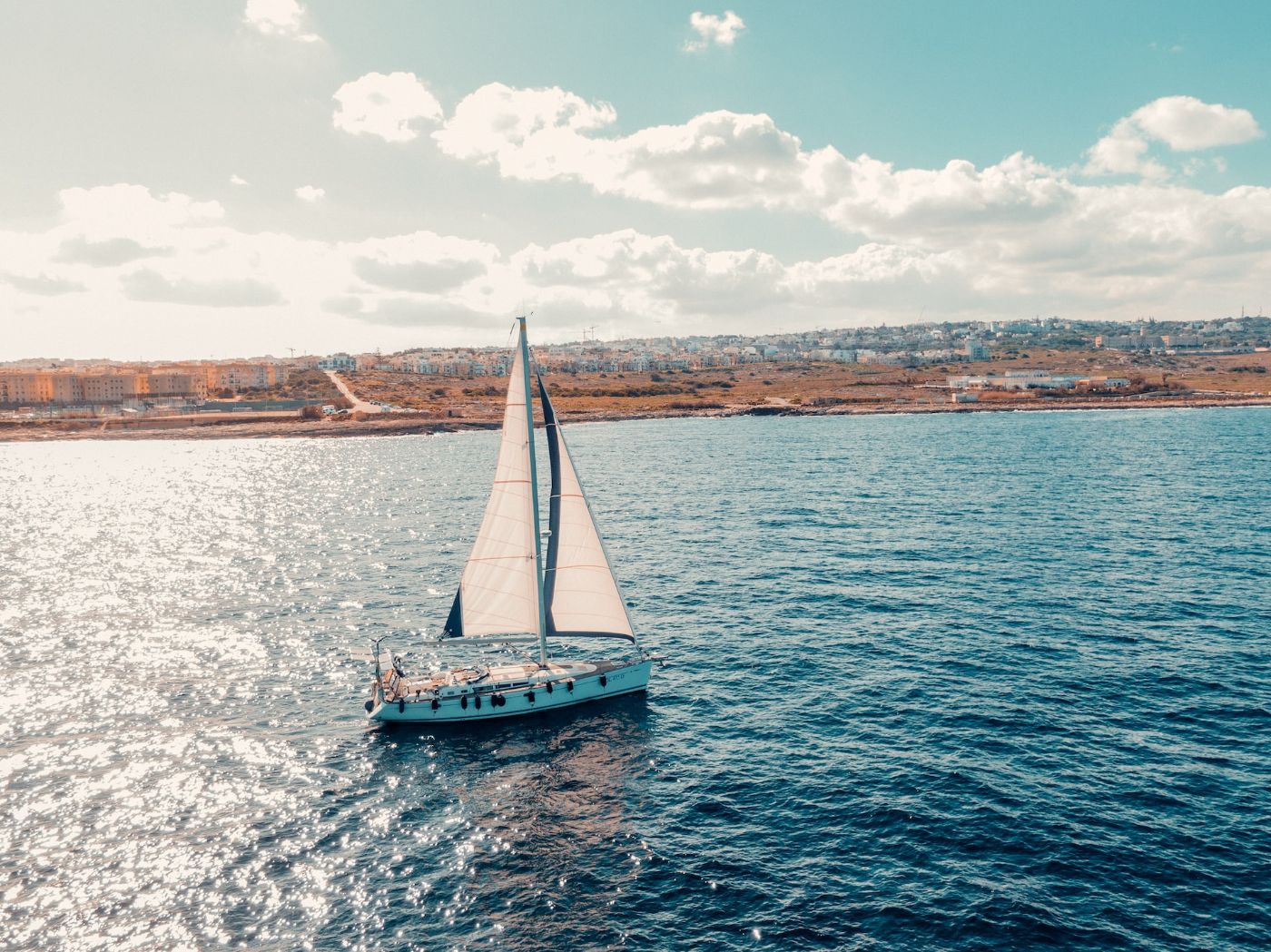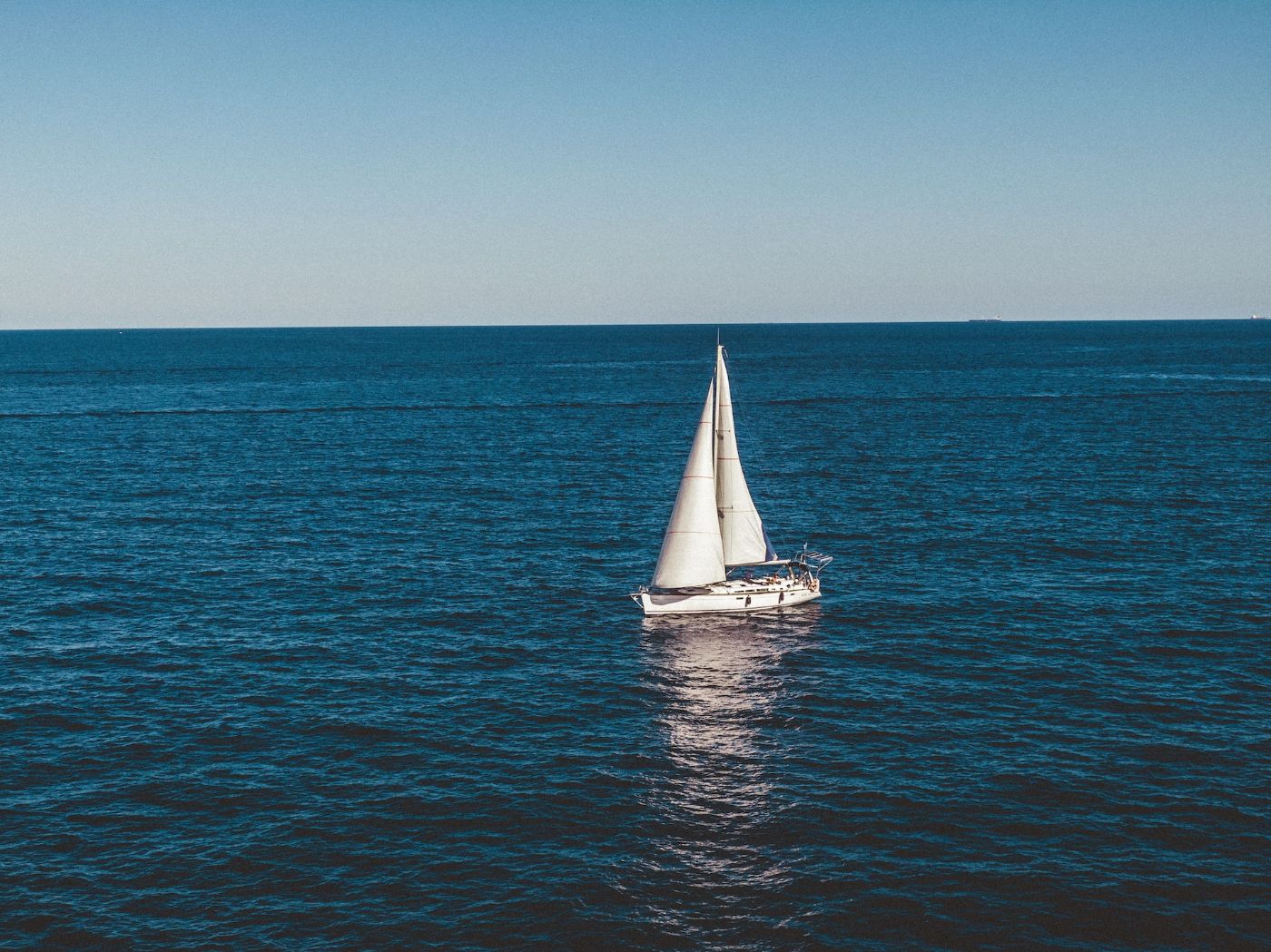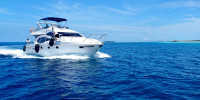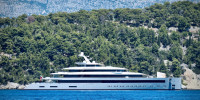What's the Right Size Sailboat for the Mediterranean Sea?
There's really no requirement in the Mediterranean Sea when it comes to the size of your sailboat. However, some marinas and ports in this area have limitations on the size of boats they can accommodate. With that, let me help you take into account marina slip size and other dimensional limitations on the European coast when choosing the right size sailboat for exploring the Med Sea.
Sailboats between 30 and 50 feet are commonly used for cruising and racing in the Mediterranean. Smaller sailboats can also be used, but are more limited in terms of their range and comfort. Meanwhile, larger sailboats may be more challenging to maneuver in some of the tighter spaces found in many Mediterranean ports.
Marina Agana in Croatia can only accommodate boats with a maximum length of 25 meters and drafts of up to 6 meters. If your sailboat exceeds these dimensions, you may need to find alternative marinas in the area. Let's find out more about this interesting fact.
Summary
- Port Vauban in France can accommodate boat lengths of up to 160 meters, while Port de Fontvieille in Monaco can only accommodate boat lengths of up to 30 meters.
- The recommended boat size in Croatia ranges from 30 to 40 feet, but in Greece, you can have sailboats as big as 50 feet.
- The European coast has several canals, bridges, and locks that have size restrictions, which can limit the maximum size of sailboats that can pass through these areas. Check the area where you will be passing and learn about certain boat size requirements.

The Right Size of Sailboat in the Mediterranean Sea
Below is a table of some of the marinas in the Mediterranean Sea with their estimated maximum boat length size requirements:
| Marina Name | Location | Maximum Boat Length |
|---|---|---|
| Port Vauban | Antibes, France | 160 meters |
| Marina di Portofino | Portofino, Italy | 40 meters |
| Port de Fontvieille | Monaco | 30 meters |
| Marina di Capri | Capri, Italy | 60 meters |
| Marina di Porto Cervo | Sardinia, Italy | 100 meters |
| Marina di Stabia | Naples, Italy | 80 meters |
| Marina di Portisco | Sardinia, Italy | 90 meters |
| Marina di Cala Galera | Tuscany, Italy | 50 meters |
| Marina di Portovenere | Portovenere, Italy | 50 meters |
| Marina di Porto Mirabello | La Spezia, Italy | 140 meters |
| Marina Agana | Croatia | 25 meters |
The minimum and maximum size of sailboat suitable for sailing in the Mediterranean Sea can vary depending on factors such as the experience level of the sailors, the specific region of the Mediterranean, and the intended use of the sailboat.
However, generally speaking, sailboats between 30 and 50 feet in length are commonly used for cruising and racing in the Mediterranean. Smaller sailboats can also be used, but may be more limited in terms of their range and comfort, while larger sailboats may be more challenging to maneuver in some of the tighter spaces found in many Mediterranean ports.
But aside from the factors mentioned above, your choice in sailboat size can also be affected by dimensional limitation on the European coast, as well as the marina slip size.
The Right Size of Sailboat for Different Mediterranean Locations
Here are the right sizes of sailboat for different parts of the Mediterranean Sea.
| Location | Recommended Sailboat Size |
|---|---|
| Croatia | 30-40 feet |
| Greece | 40-50 feet |
| Italy | 35-45 feet |
| Turkey | 30-50 feet |
| Spain | 35-50 feet |
| Malta | 30-45 feet |
| Tunisia | 30-50 feet |
Factor in dimensional limitations in the European coast

The European coast has several canals, bridges, and locks that have size restrictions, which can limit the maximum size of sailboats that can pass through these areas. This means that sailboats that are too large may not be able to access certain areas or may have to take longer routes to reach their destination, which may be inconvenient or impractical.
Below are some examples of dimensional limitations on the European coast that can affect your size choice of sailboats:
1. The maximum canal lock size in Canal du Midi in France is 30 meters
The Canal du Midi is a popular route for sailboats cruising in the Mediterranean. However, the canal has several locks with the following requirement:
- Maximum length: 30 meters
- Maximum width: 5.2 meters
- Maximum draft: 1.8 meters
Sailboats that exceed these dimensions may not be able to pass through the canal. If you want to learn more about the average canal lock sizes in other parts of Europe, you might want to read this article.
2. Restrictions in Venice, Italy
Venice has several canals and bridges that have size restrictions. The Rialto Bridge is one of the most famous bridges in Venice and has a central arch with a clearance height of 7.5 meters and a width of 22 meters.
Sailboats with a mast height greater than 7.5 meters may not be able to pass under the bridge, while sailboats with a beam width greater than 22 meters may not be able to pass through the central arch.
The Venice Grand Canal is the main waterway in Venice and has several bridges and narrow points that can limit the size of sailboats that can navigate through. Some of the narrower points on the canal have a width of just 5 meters, which can limit the size of sailboats that can pass through.
Additionally, some of the bridges on the canal have a clearance height of just 4 meters, which can limit the size of sailboats that can pass under them.
3. The French Riviera has several sailboat limitations
The French Riviera has several ports and marinas that have limited space and may not be able to accommodate larger sailboats. For example, the Port de Nice has a maximum length limit of 190 meters and a maximum draft limit of 6 meters.
4. The narrow path of the Strait of Gibraltar can be a limiting factor for sailboats
The Strait of Gibraltar is a narrow channel that connects the Mediterranean Sea to the Atlantic Ocean. The strait has a maximum width of 14.3 kilometers and a maximum depth of 900 meters. Sailboats that are too large may have difficulty navigating through the strait, especially during periods of strong currents or high winds.
Additionally, there are several shipping lanes in the strait that are used by large commercial vessels. Sailboats should be aware of these shipping lanes and take caution when navigating through the strait.
Consider the draft size and mast type of your sailboat
The draft refers to the depth of the boat's keel, which determines how close you can get to shore. In general, sailboats with a draft length of 6 feet or less are considered more suitable for sailing in the Mediterranean Sea. This is because many ports and harbors in the Mediterranean have shallow waters, and sailboats with a deeper draft may have difficulty accessing certain areas or may be limited in their ability to anchor in shallow waters.
Also, sailboats with a shallower draft tend to be more maneuverable and can navigate through narrow channels and shallow waters more easily. This can be particularly important in areas of the Mediterranean with strong currents or tidal changes.
The mast size is also important, as it determines the sail area and the boat's performance in different wind conditions. Most sailboats in the Mediterranean use either a masthead rig or a fractional rig.

A masthead rig is a type of sailboat mast where the forestay attaches to the very top of the mast, while the backstay attaches to the stern of the boat. This type of rig is commonly used on larger sailboats and provides a more powerful sail plan for upwind sailing, making it a good choice for racing or cruising in the Mediterranean.
A fractional rig, on the other hand, is a type of sailboat mast where the forestay attaches to a point below the top of the mast, typically around two-thirds of the way up. This type of rig is commonly used on smaller sailboats and provides a more balanced sail plan, making it a good choice for cruising and day sailing in the Mediterranean.
An ultimate guide to rig types can be found in this article: Guide to Understanding Sail Rig Types (with Pictures)
The impact of marina slip size in choosing the right sailboat size
A marina slip that is too small for a sailboat can make docking and maneuvering difficult, while a slip that is too large can limit the number of available slips and may be more expensive to rent.
Additionally, the size of the marina slip can also impact the cost of docking and mooring fees. Larger sailboats typically require larger slips, which can be more expensive to rent. Therefore, choosing a sailboat size that fits comfortably in the available marina slips can help keep docking and mooring fees more affordable.
The cost of dry-docking a sailboat in some of the popular docking spots in the Meds can be found in this article.
Sailboats between 30-40 feet in length are perfect in exploring Croatia
Croatia is a popular sailing destination in the Mediterranean, known for its stunning coastline and crystal-clear waters. When sailing in Croatia, it is recommended to choose a sailboat that is between 30-40 feet in length. This size of sailboat is perfect for exploring the Dalmatian Coast, which is dotted with picturesque islands and charming coastal towns such as Dubrovnik, Korcula, and Ston.
Choose sailboats within 40-50 feet when sailing in Greece
Greece is another popular sailing destination in the Mediterranean, with its beautiful islands and clear blue waters. When sailing in Greece, the best recommended size of sailboat is between 40-50 feet in length.
This size is perfect for exploring the Saronic Gulf, which is home to some of the most popular islands such as Hydra, Poros, and Spetses. You can also explore the islands of Hvar, Mijet, and Brac with this size of sailboat.
Italy is best explored using sailboats with size ranging from 35-45 feet
Italy is a popular sailing destination in the Mediterranean, known for its stunning coastline, charming villages, and delicious cuisine. When sailing in Italy, try to choose a sailboat that is between 35-45 feet in length.
This size of sailboat is perfect for exploring the Amalfi Coast, which is home to some of the most picturesque towns such as Positano, Amalfi, and Ravello. You can also explore the beautiful Krka Falls and the islands of Portorosa and Procida with this size of sailboat.

A 30-50-foot sailboat is best for exploring Turkey
Turkey has a long coastline with many sheltered bays and coves, making it an excellent destination for exploring by sailboat. The local weather conditions can be variable, with strong winds and choppy seas in some areas.
A sailboat with a length of 30-50 feet may be suitable for sailing in Turkey. This size sailboat provides good windward performance and a sturdy hull for navigating the strong winds and choppy seas in some areas.
A 35-50-foot sailboat is most suitable for sailing in Spain
Spain has a diverse coastline with many different sailing areas, including the Balearic Islands, the Costa Brava, and the Canary Islands. The local weather conditions can vary depending on the area, with strong winds and currents in some areas.
A sailboat with a length of 35-50 feet may be suitable for sailing in Spain. This size sailboat provides good maneuverability and a reliable engine for navigating the strong winds and currents in some areas.
Malta is best explored using sailboats with heights of 30-45 feet
Malta is a small island nation with a rich history and many ancient sites to explore. A sailboat with good cruising amenities and comfortable accommodations may be a good choice for sailing in Malta. Sailboats with lengths of 30-45 feet may be suitable for sailing in Malta.
Tunisia can be explored using a sailboat with a length of 30-50 feet
Tunisia has a long coastline with many sandy beaches and clear waters. The local weather conditions can be variable, with strong winds and choppy seas in some areas.
A sailboat with a length of 30-50 feet may be suitable for sailing in Tunisia. This size sailboat provides good windward performance and a sturdy hull for navigating the strong winds and choppy seas in some areas.
If you like to learn more tips for sailing in the Meds, you might want to read this article.
Did you find the answer to your specific question?
👍 0 👎 1


Leave a comment